

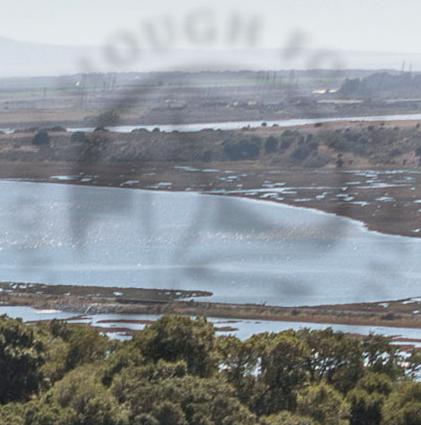








Just a few years into the restoration process, Sand Hill Farm is a dramatically changed landscape since June 2016, when the Foundation purchased the land through a grant from the California State Coastal Conservancy. Before that time, much of the land had been under cultivation for decades as a conventional strawberry farm, with plastic-lined rows creeping higher and higher up the steep slopes each season. Productive, well drained soils with south-facing exposure are at a premium – so hard-pinched farmers did what they could to cultivate every available acre of land. The hillside strawberry rows were sheeted with agricultural plastic and irrigated using perforated drip tape, and dirt roads were carved into the hills so that farmworkers could tend and harvest the row crops.

(Continued on page 4)
ESF Stewardship Director Dash Dunkell waters native plants on the slopes of Sand Hill Farm (photo by Luciane Coletti, www.lucianecoletti.com)
Elkhorn Slough Foundation
Anne Olsen
President
Robert Hartmann
Vice President
C. Michael Pinto
Treasurer
Bruce Welden
Secretary
Judith Connor
Past President
Gary Bloom
Ed Boutonnet
Terry Eckhardt
Sandy Hale
Emmett Linder
Kent Marshall
Murry Schekman
Anne Secker
Laura Solorio, MD
Tara Trautsch
Mark Silberstein
Executive Director
The mission of the Elkhorn Slough Foundation is to conserve and restore Elkhorn Slough and its watershed.
We see Elkhorn Slough and its watershed protected forever— a working landscape, where people, farming, industry, and nature thrive together. As one of California’s last great coastal wetlands, Elkhorn Slough will remain a wellspring of life and a source of inspiration for generations to come
PO Box 267, Moss Landing California 95039
tel: (831) 728-5939
fax: (831) 728-7031
www.elkhornslough.org
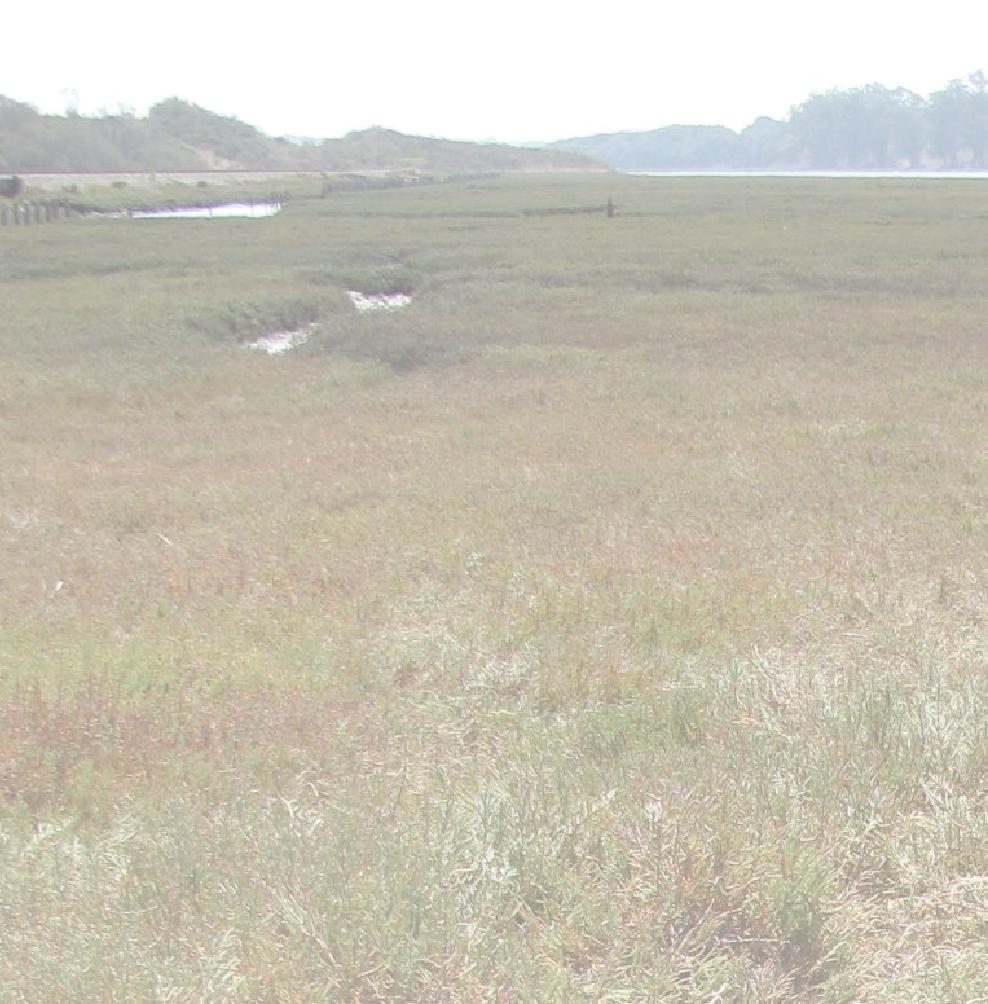
As they munch on plants and burrow through the soil, crabs are wreaking havoc on salt marshes around the country — or are they?
Depends where you look, according to a study published this August in the journal Ecology. Elkhorn Slough Reserve researchers led the study, in collaboration with scientists from 14 other sites in 13 coastal states. Together, they found crab burrows in just under half of the plots they sampled. In only four estuaries did researchers fi nd evidence that crabs were having a negative effect on marsh vegetation. At fi rst glance, the study appears to contradict recent experiments that demonstrated that crabs can cause dramatic marsh die-off.


Yet in crab research, as in real estate, location is everything. Because field experiments are labor intensive, requiring the installation of many cages, researchers often position cages at sites where they see lots of crab burrows — at lower elevations and near tidal creek banks.
The new study systematically sampled salt marshes along transect lines that extended from the uplands down to the edge of tidal creeks. Few crabs were found in most places, but they were abundant near tidal creeks in some estuaries — the same sorts of locations visited by researchers to conduct their past experiments.


“Patterns in nature differ across scales,” notes Elkhorn Slough Reserve Research Coordinator Kerstin Wasson, lead author of the study. “We found that crabs can cause a lot of harm at a local scale, in some parts of some marshes, but they don’t seem to be a main cause of marsh die-back at a national scale.”
Scott Nichols, Editor

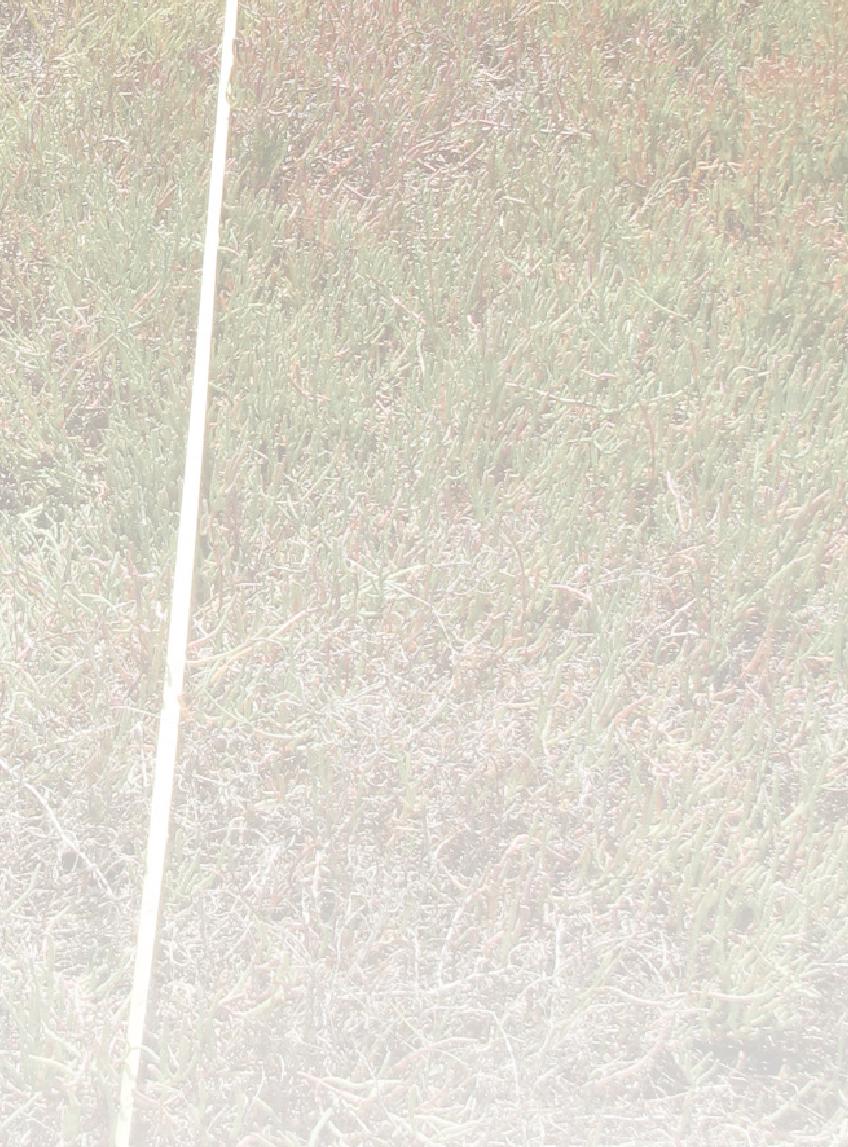
Though crabs did not have a strong overall influence on salt marshes, elevation did. Lower parts of the marsh are submerged more often and tend to have poorer overall health. Th is study suggests that rising sea levels associated with climate change pose a bigger threat to the nation’s salt marshes than crabs.
“We’ll be seeing more crabs in our marshes as waters rise,” says Dr. Kenny Raposa of the Narragansett Bay National Estuarine Research Reserve in Rhode Island, another lead scientist of the study. “The health of our marshes will be challenged by rising seas and increasing crab burrows at the same time.” n


















About a year ago, the Elkhorn Slough Reserve’s Tidal Wetlands Program — guided by input from more than 100 scientific advisors, environmental regulators, and community members — restored about 61 acres of drowning tidal salt marsh habitat. Tidal marshes are especially effective at capturing and storing carbon for thousands of years. Researchers project that, without restoration, we will lose the slough’s remaining marshes within 50 years, so now is the time to act to save our marshes and defend against the impacts of climate change.
With projected sea level rise in mind, more than 200,000 cubic yards of dirt were moved to raise the marsh to restore the marshland’s meandering channels, using aerial photos from the 1930s as our guide. Pickleweed and other marsh vegetation have started to recolonize the site. Reserve researchers are monitoring the diversity of fish and wildlife at Hester Marsh — and have already spotted sea otters exploring the new tidal channels.


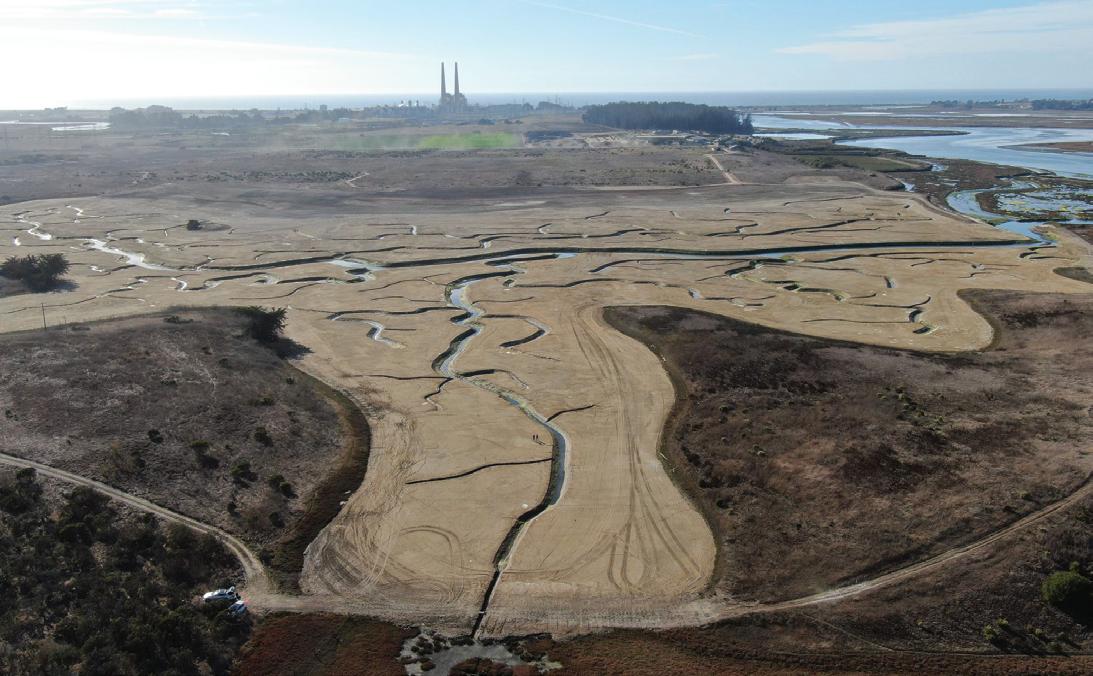
The Tidal Wetlands Program is now embarking upon the second phase of the Hester Marsh restoration, which will raise an additional 61 acres of threatened tidal marsh in the coming year. When Phase II is complete, the Hester Marsh restoration project will have elevated 122 acres of coastal salt marsh to a level that can withstand and track projected sea level rise for the next century. The newly restored marshes will continue to capture carbon from the atmosphere, provide habitat for wildlife, and reduce tidal erosion along the channels and shores of the estuary.
Restoring coastal resilience benefits wildlife and humankind alike. With your ongoing support, we can continue to restore and protect threatened habitats like Hester Marsh for generations to come. n
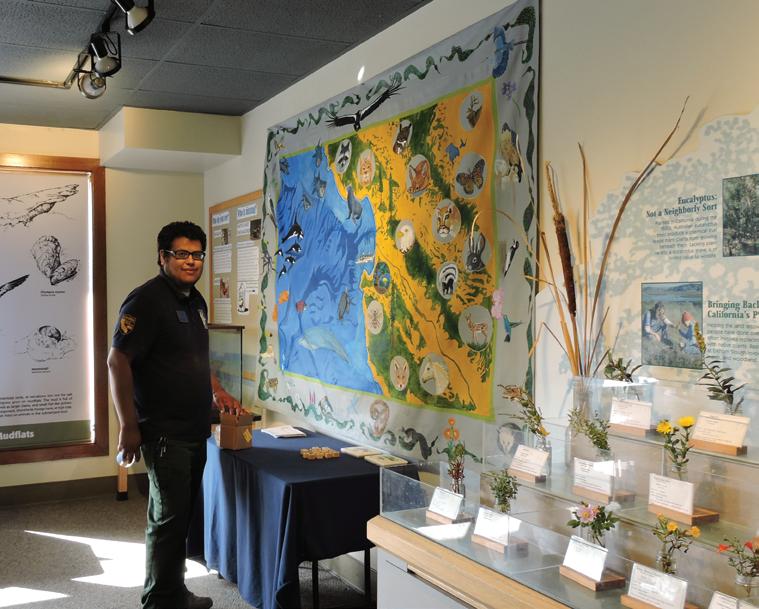
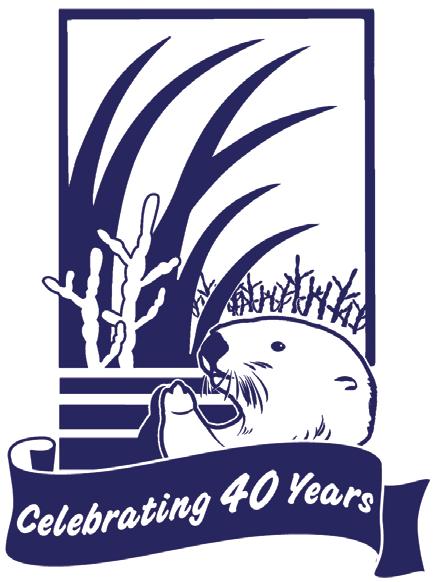
Photo by John Haskins/ESNERR

f helping the Res ve celebrate 40 ye s!
On September 28, more than 500 people joined the fun at the Elkhorn Slough Reserve Open House & Native Plant Fair. Learn more about the Reserve’s history and partnerships in the upcoming issue of Tidal Exchange



Once lined with eroding farm rows that starkly contrasted with its surroundings, the slopes of Sand Hill Farm are now beginning to blend in with the scrub, chaparral, and woodlands of neighboring conservation lands. Yet as Sand Hill Farm starts to shade gracefully into the landscape, we hope it won’t fade from your attention.
With your help, the restoration of Sand Hill Farm is off to a great start, yet much work still needs to be done — and we need your help to make it happen.
You can help ESF heal the land and limit erosion permanently with the reintroduction of native maritime chaparral and oak woodland habitat. Th is restored habitat will support biodiversity, recharge groundwater aquifers, and encourage the return of wildlife.
Now through the end of the year, we have an exciting opportunity to leverage your gift to protect and restore Sand Hill Farm and neighboring conservation lands. When you make a contribution through Monterey County Gives, your donation will be matched by a generous challenge gift — plus, both your gift and the challenge amount will earn a match through Monterey County Gives!
So whether you are a new or renewing member, or simply want to make a special contribution to support this important project, we hope you will take advantage of the limited-time opportunity through Monterey County Gives to stretch your tax-deductible gift to support Elkhorn Slough. Boost your year-end gift today at montereycountygives.com/elkhorn. Th ank you! n
(Continued from cover)
These practices were economically motivated but, ultimately, unsustainable. The increasing intensity of cultivation offered a short-term fi x with longterm consequences. The sandy slopes suffered under the pressure of cultivation: over time the farm rows were undercut by erosion, hillside farm roads were washed out, and sediments silted the land and water downstream – including wetlands of the adjacent Elkhorn Slough Reserve.
Recognizing Sand Hill Farm as a key piece in the slough conservation puzzle, the Elkhorn Slough Foundation approached the landowners several times over the past three decades. Following best practices as an accredited land trust, however, ESF only acquires conservation lands from willing sellers, and the landowners were simply not ready to sell until a few years ago. Yet when the sellers were ready, so were we—thanks in no small part to the vision and ongoing support of members like you.

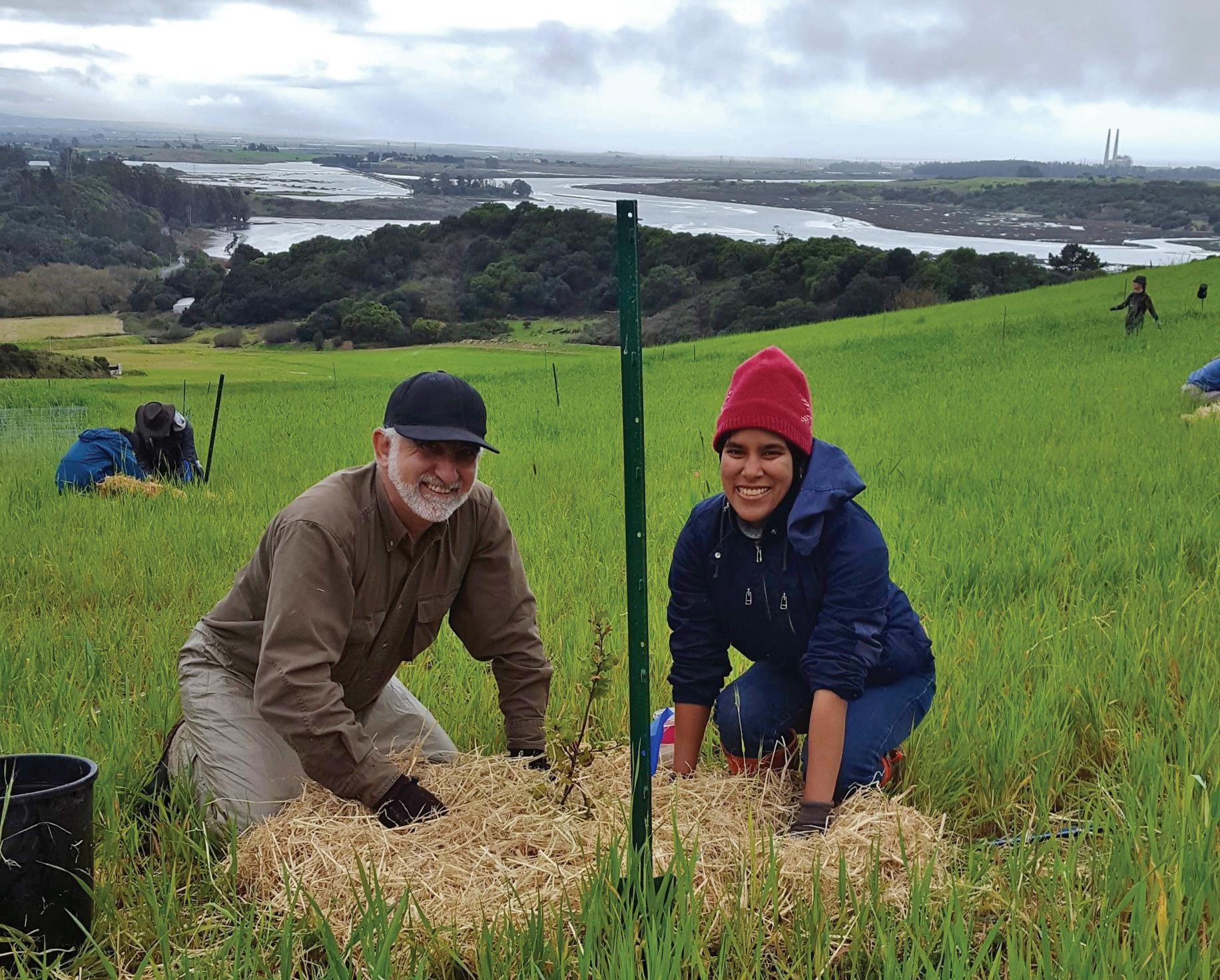


When we acquired Sand Hill Farm, there was no time to waste. The rainy season was approaching, and early forecasts suggested a wet year. Unfortunately, the property was in terrible shape: torn plastic mulch covered rows of dead strawberry plants, thousands upon thousands of feet of plastic drip lines lay across every




field, and abandoned farming supplies littered the landscape. With a huge effort we were able to clean up the mess and get ready for the winter rains. Yet just when we thought we were in the clear, Mother Nature had other plans. Th at winter ended up being one of the wettest and stormiest in decades, and much of our hard work was literally washed away.
(Clockwise from top) When ESF acquired the Sand Hill Farm property in 2016, the land was riddled with erosion and littered with abandoned plastic and farming supplies; because runoff from Sand Hill Farm flows to the wetlands and waters of Elkhorn Slough, our immediate priority was to remove trash, re-contour the steep hillsides, and plant cover grasses to limit erosion; with the help of members and volunteers, we have begun planting coast live oaks and other native plants; with time and your support, we can restore healthy native habitat on the slopes of Sand Hill Farm.
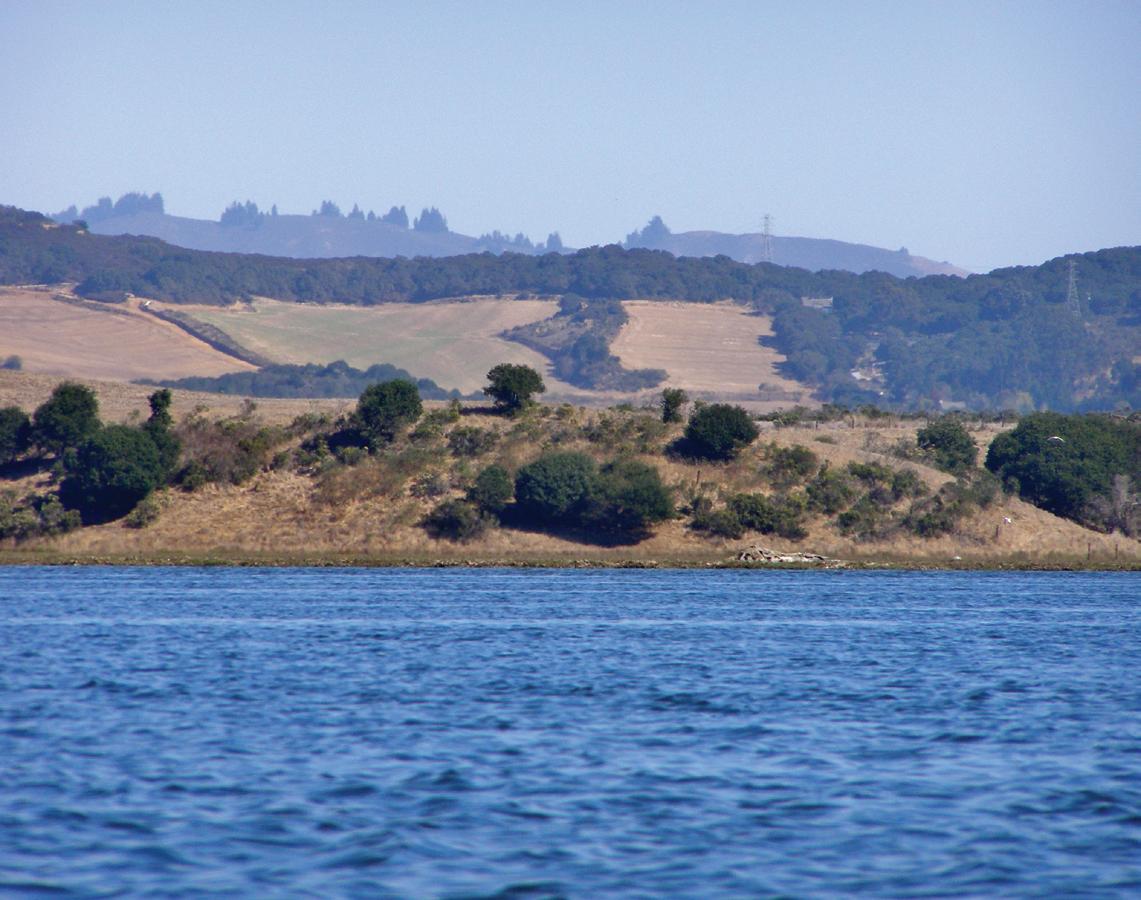
Rather than give up, we decided to invest even more time and resources in the farm. We engineered sediment basins to better capture runoff, laid down swaths of coconut fiber cloth to hold soils in place, and planted thousands of willow stakes to capture and slow the rainwater. The next winter saw nearly zero runoff and erosion, validating our efforts and proving our investment worthwhile.
Yet we still have much work to do at Sand Hill Farm. And we can’t do it without your help.
Well into our third year of restoration, a fi rst wave of native plants—sky lupine, coyote brush, and coastal sage— have gained a foothold and are naturally recolonizing their historic habitat. These pioneer species anchor the soil, limit invasive weeds, and provide forage and cover for wildlife. Interspersed among these plants are brightly colored flags, which mark plantings of perennials grown in the Reserve greenhouse from locally sourced seeds and cuttings — plants like coffeeberry, sticky monkeyflower, and manzanita that are well-adapted to thrive in oak savanna and maritime chaparral.
Together with the coast live oaks and willow cuttings planted by ESF members, staff, and community volunteers, these plantings are just the beginning of our efforts to restore healthy, self-sustaining plant communities on the slopes of Sand Hill Farm. Native vegetation is not just a source of habitat and forage for wildlife, it also helps resist erosion and recharge groundwater aquifers, promoting greater biodiversity and resilience to climate change.
So, what’s next for Sand Hill Farm? In Phase II of our restoration efforts, we will continue stabilizing soils, protecting biodiversity, and enhancing native habitat with additional plantings. We will be sowing seed and acorns, as well as planting seedlings given a head start in the Reserve greenhouse. Ultimately, our goal is to give native plant communities a competitive advantage in this once-degraded landscape. n
As the school year reaches full swing, so does the excitement at ESF’s Carneros Creek Outdoor Classroom. Each season, the Outdoor Classroom buzzes with the laughter of hundreds of schoolchildren who learn about local ecosystems and environmental science in the shade of a massive coast live oak.
ESF's Outdoor Classroom continues to grow in scope. Guided by dedicated ESF volunteer and environmental science educator Kenton Parker, 90 fourth-grade students from neighboring Hall District Elementary School attend lessons on the land, culminating in a special field day where the “Junior Rangers” share their knowledge and experiences with students in second grades.
This year, with the help of Kenton’s energy, expertise, and enthusiasm, ESF’s Outdoor Classroom expands its reach to additional Title 1 schools in the Pajaro Valley School District.
“These schools are very excited about the setting and content of our outdoor classroom programs,” says Kenton. “And we’re eager to share the wonders that can be found in the Elkhorn Slough watershed with a whole new group of students.” n
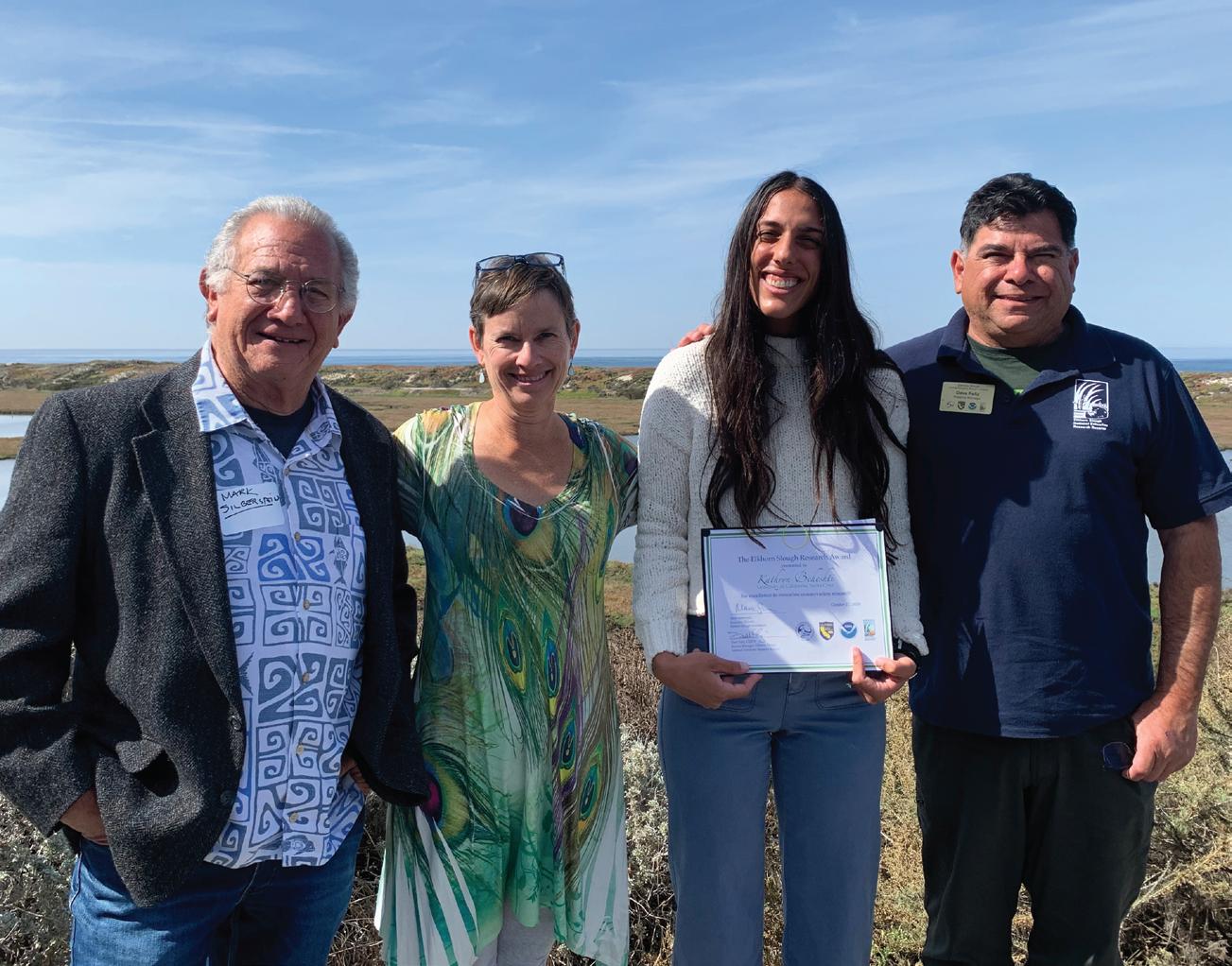
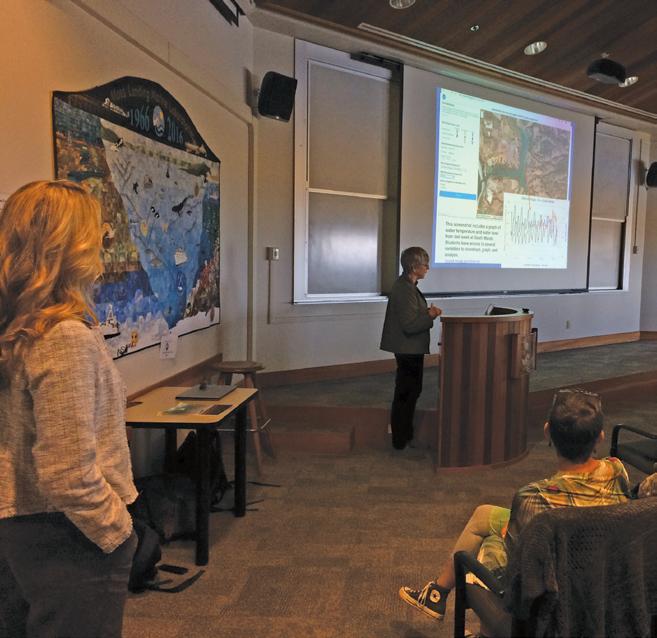
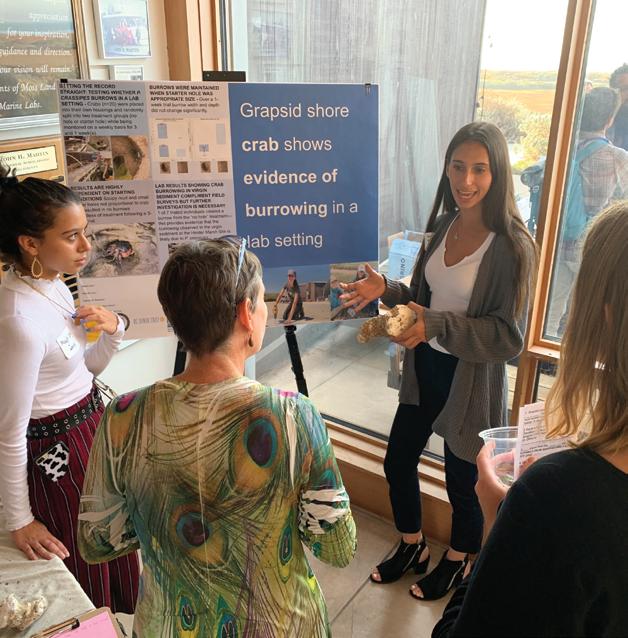
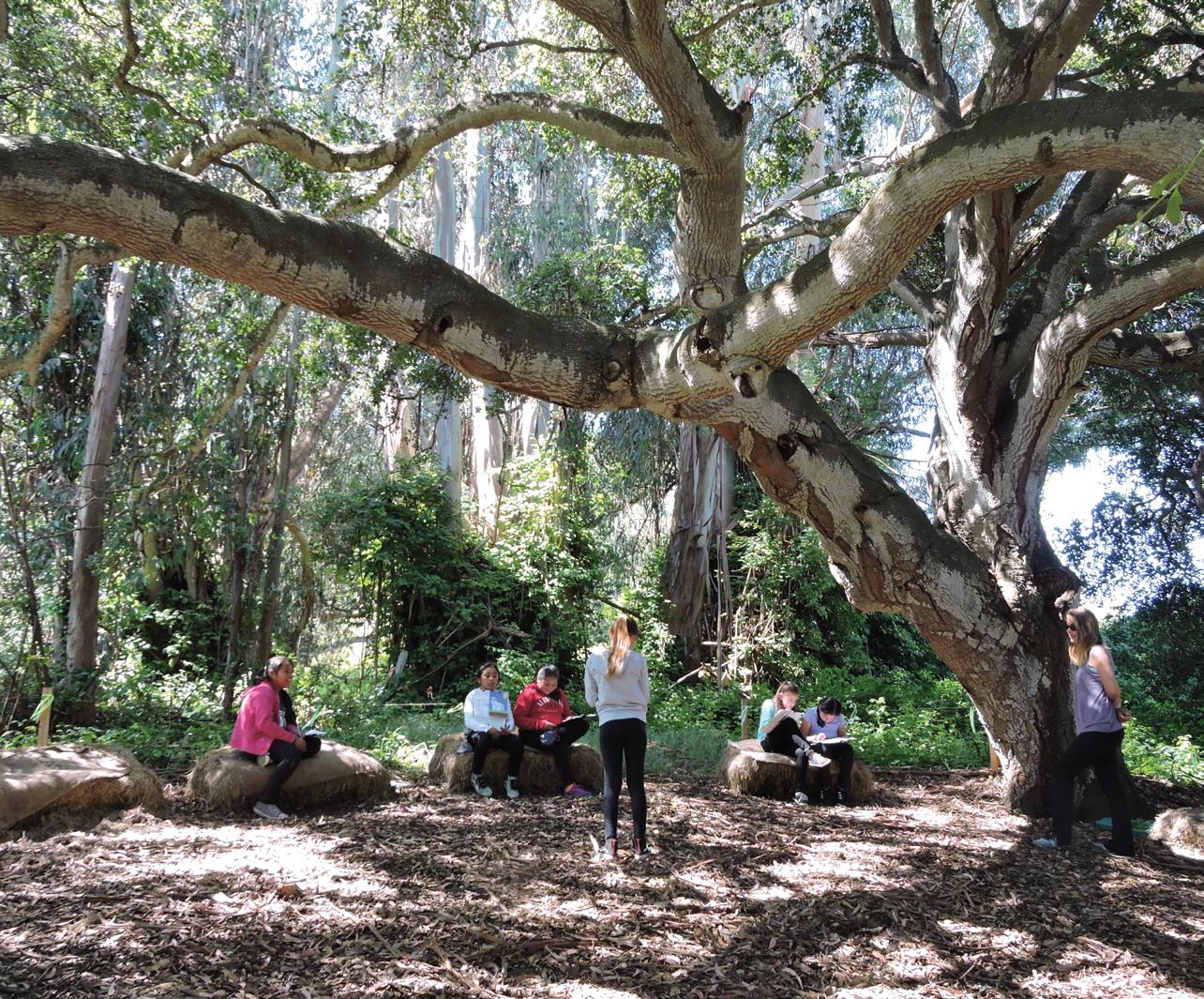

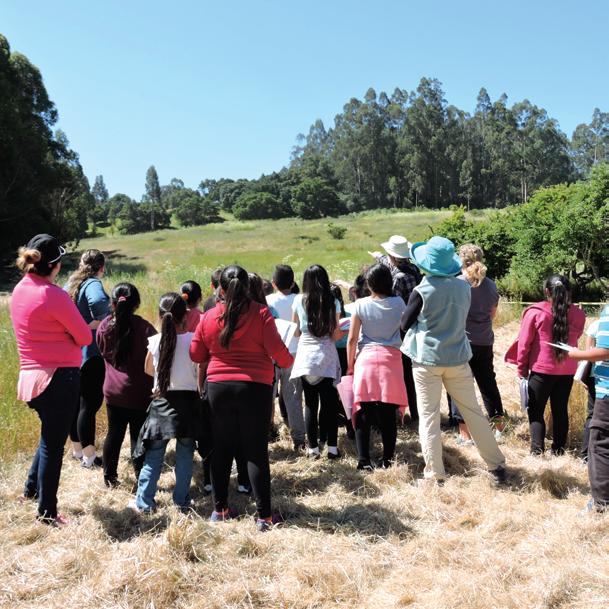
Communicate your results. This brief step in the scientific method can bring enormous benefits: the creation of new scientific collaborations and hypotheses, the replication and validation of research, and the development of fresh insights and revisions through critical questioning and peer review. This was the spirit behind the 2019 Elkhorn Slough Science Symposium, where more than 100 scientists, stewards, and educators convened to share their studies of the estuary and its watershed.
Speakers at the Symposium included Reserve staff, local professors and graduate students, and other researchers. Topics ranged from restoration to science education to water quality. The focal species varied as well, from tiny snails to marsh plants to sea otters. The Symposium thus captured the diversity of science occurring in the estuary.
(top) ESF Executive Director Mark Silberstein, Reserve Research Coordinator Kerstin Wasson, and Reserve Manager Dave Feliz present the Elkhorn Slough Conservation Research Award to Kat Beheshti; (bottom left) Reserve Education Coordinator Virginia Guhin and Education Specialist Peggy Foletta deliver a presentation on the Reserve’s science education programs; (bottom left) students mentored by Kat Beheshti share their scientific posters at the Symposium.
One thing that unites people is our connection to the land: Americans strongly support conserving local lands they love. Since 1982, ESF has worked to protect the Elkhorn Slough watershed. In 1997, the Foundation’s Board of Directors made the strategic decision to become a land trust, adopting its mission to conserve and restore Elkhorn Slough and its watershed. This fall, ESF earned renewed accreditation through the Land Trust Accreditation Commission (LTAC), as part of a network of over 400 accredited land trusts across America, committed to professional excellence and to maintaining public trust in land conservation.
“Our work as a land trust began in 1997, and since then we have protected more than 4,000 acres,” says Anne Olsen, chair of ESF's Board of Directors. “It’s an honor to be re-accredited by LTAC and recognized alongside sister land trusts performing critical conservation work throughout North America.” n

Terry Eckhardt, ESF

From the ridgeline to the tideline (to the submarine canyon), I have literally immersed myself in the Elkhorn Slough for over 40 years since my graduate days at Moss Landing Marine Labs. I am now proud to serve on the Elkhorn Slough Foundation’s Board of Directors.
At the ridgeline, Sand Hill Farm serves as a terrific example of how changes in agricultural practices can reduce erosion, decrease pollution, and help recharge our aquifer. Our ongoing restoration work includes the removal of 130 tons of plastics and trash, the planting of oak trees and native vegetation, and has already made a measurable improvement in the slough’s water quality.
This year, UCSC graduate student Kathryn “Kat” Beheshti received the Elkhorn Slough Conservation Research Award in recognition of her dedicated and creative work investigating eelgrass and marsh dynamics in Elkhorn Slough. Her research also explored the effects of crabs and inundation on tidal salt marshes (story on page 2). In addition to her own doctoral work, she was a generous collaborator on various Reserve research projects and a vital part of the team conducting restoration science at Hester Marsh, helping assess “blue carbon” function and leading a study on crab effects on restoration.
Kat also worked with Reserve education staff to develop curriculum to engage youth in science, and volunteered at the Reserve’s Open House. She has mentored dozens of younger scientists, and helped six of her interns prepare posters that they proudly presented at the Symposium. Last year’s award went to another Kat — Kathleen “Kat” Hicks, for her sophisticated statistical analysis of more than 20 years of monthly water quality data collected by ESNERR staff and volunteers. n
Meanwhile, at the tideline, the Elkhorn Slough Reserve’s Tidal Wetlands Program will soon commence Phase Two of the Hester Marsh restoration. A total of 122 acres of tidal marsh will be restored and elevated in anticipation of sea level rise. Through collaboration with diverse partners we have become leaders in an international effort to mitigate the impacts of climate change and understand the role that healthy wetlands can play in that mitigation.
From the ridgeline to the tideline, these projects demonstrate what our community is capable of when we actively protect and care for the natural world. We have a long way to go, but I’m heartened by what I’ve witnessed in my lifetime, and also by an inspirational new generation of conservationists.
This important work is not possible without the enthusiastic and generous investment of our community. On behalf of the Elkhorn Slough Foundation Board of Directors and staff, thank you for rising to the occasion to protect and restore this gem on the central California coast. n
P.O. Box 267
Moss Landing, CA 95039
Elkhorn Slough Reserve is open to the public Wednesday through Sunday, 9 am to 5 pm. We hope you’ll join us for a visit or an event. For more information & holiday hours, visit elkhornslough.org.
Every Saturday & Sunday: Reserve Tours
Join knowledgeable docents for tours of the Reserve at 10 am & 1 pm
First Saturday every month, : am | “Early Bird” Walk
With local birding expert Rick Fournier. Meet at the Reserve at 8:30 am
December 3 | Giving Tuesday — elkhornslough.org
Our goal this year is to inspire 40 of our friends to join Sustaining the Slough, ESF’s monthly giving program. Join us, and we will have the resources needed to seize every opportunity and make 2020 a watershed year for Elkhorn Slough. To sign up, visit elkhornslough.org
December 5, 5pm | Volunteer Information Night
Join us for an evening talk about volunteer opportunities in research, education, and stewardship at the Reserve — and learn how you can get involved!
Dec. 7, 10am–1pm | Public Planting at Hester Marsh
Many hands make light work! Reserve Stewardship Coordinator Andrea Woolfolk will lead a community planting at the Hester Marsh restoration site. Lend a hand and learn more about the next phase of restoration! Free — registration required.

Are you 70 ½ years of age or older and planning a required minimum distribution from your IRA?
Consider making your charitable gift through a qualified charitable distribution (QCD). A QCD will count towards satisfying your required minimum distribution, and neither you nor Elkhorn Slough Foundation will pay taxes on your distribution, unlike regular withdrawals from your IRA.
Visit ElkhornSlough.org and follow us on Facebook, Twitter, YouTube & Instagram for news, updates, videos, photos, events and more!

